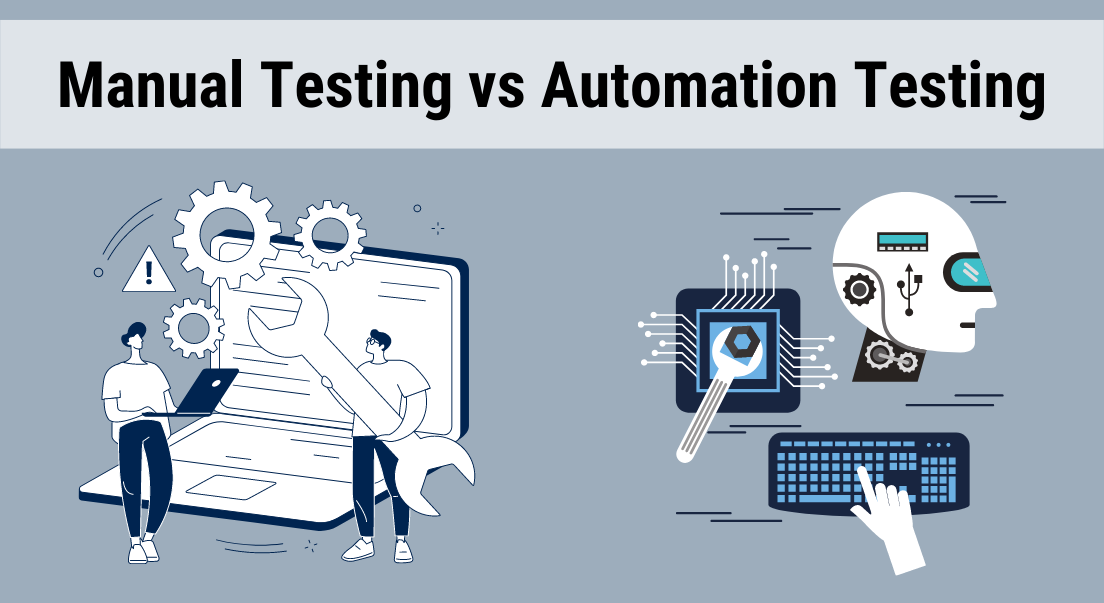Efficient Automation Testing: Enhancing Software Integrity and Speed
Efficient Automation Testing: Enhancing Software Integrity and Speed
Blog Article
From Guidebook to Automated Testing: A Comprehensive Overview to Transitioning Efficiently and Properly
In the world of software application screening, the change from manual to automated processes has actually ended up being a progressively essential change for companies looking for to boost efficiency and accuracy in their screening methods. As technology remains to development, the need for efficient and seamless computerized testing techniques has actually never been much more important. The trip from handbook to automated screening is not without its obstacles, however when approached strategically and with a clear strategy in mind, the advantages can be substantial - automation testing. In this extensive guide, we will check out key steps and considerations vital for an effective shift, from the preliminary selection of devices to the assimilation of automation right into existing process. Keep tuned to discover the insights that will certainly help lead the way for a smoother and much more effective screening procedure.
Benefits of Automated Checking
Automated screening uses numerous benefits, boosting efficiency and precision in software program development processes. One key advantage is the considerable reduction in testing time. Automated examinations can be run at the same time on multiple gadgets and running systems, substantially speeding up the screening stage compared to hands-on testing. This increased effectiveness permits for faster feedback on the top quality of the software, making it possible for programmers to determine and deal with problems immediately.
Additionally, automated testing ensures a higher degree of precision in detecting defects. Considering that automated tests adhere to predefined scripts, human error is decreased, causing more trustworthy examination results. Consistency in testing is additionally enhanced, as automated examinations perform the exact same actions exactly each time they are run. This consistency is critical in ensuring that all functionalities of the software program are completely tested, decreasing the chance of unnoticed bugs sliding through to production.
Picking the Right Tools

To start with, assess your goals and requirements. Comprehend the scope of your task, the innovations involved, and the ability of your group. This analysis will certainly aid you determine the abilities and attributes you require in your testing tools.
Secondly, consider the compatibility of the devices with your existing systems and procedures. Seamless assimilation with your present software program advancement lifecycle is important to guarantee a smooth transition to automation.
Furthermore, examine the scalability and adaptability of the devices. As your testing requires progress, the tools ought to be able to adjust and fit changes successfully.
Last but not least, consider the assistance and community around the devices. Robust assistance and an energetic customer area can provide important sources and assistance when implementing automated testing. By carefully taking into consideration these elements, you can select the right tools that straighten with your demands and established the stage for a successful shift to automated screening.
Writing Efficient Examination Manuscripts

When crafting examination manuscripts, it is important to think about the details needs of the software program being evaluated and guarantee that the scripts resolve all critical functionalities. Descriptive and clear calling conventions for test scripts and test cases can boost readability and maintainability. Furthermore, integrating error handling important link devices within the examination manuscripts can aid in recognizing and addressing issues without delay.
In addition, organizing test manuscripts into modular elements can improve reusability and scalability, decreasing redundancy and improving efficiency in examination script upkeep. Regular testimonials and updates click this site to check manuscripts are crucial to keep speed with advancing software program needs and performances. By adhering to these principles, testers can create reliable and robust examination scripts that contribute considerably to the success of automated screening processes.
Integrating Automation Into Workflows
Efficient integration of automation devices right into existing process improves and streamlines processes performance within software growth cycles. When including automation into operations, it is important to determine repeated jobs that can be automated to save time and lower human error. By flawlessly integrating automated screening tools like Selenium or Appium right into the software advancement lifecycle, groups can achieve faster comments on code changes, bring about quicker pest discovery and resolution. This combination permits for continual testing throughout the development process, making sure that any type of problems are recognized early on, causing higher software application high quality. In addition, automation can be used to activate tests immediately after each code dedicate, offering immediate validation and releasing up testers to concentrate on even more facility scenarios. Correct combination of automation tools calls for partnership in between growth, testing, and operations teams to establish a unified workflow that maximizes effectiveness and performance in delivering high-grade software products.
Guaranteeing a Smooth Transition
Successfully transitioning to automated testing entails meticulous planning and mindful execution to optimize and reduce interruptions efficiency in the software application advancement procedure - automation testing. To ensure a smooth transition, it is vital to begin by conducting a thorough evaluation of the present testing procedures and identifying areas where automation can bring one of the most significant advantages. Involving with all stakeholders at an early stage while doing so, including designers, testers, and project supervisors, is essential for gathering support and buy-in for the automation effort
Interaction is key throughout this transition stage. Clear interaction of the objectives, advantages, and assumptions of automated testing aids to manage any kind of resistance or problems that may arise. Furthermore, offering appropriate training and resources for staff member to upskill in have a peek at this site automation tools and techniques is vital for ensuring a successful change.

Verdict
To conclude, transitioning from manual to automated screening offers countless benefits, consisting of raised efficiency and reliability. By picking the suitable tools, writing effective examination manuscripts, and incorporating automation effortlessly right into workflows, companies can guarantee a effective and smooth change. It is necessary to welcome automation as an important asset in software program screening processes to improve overall high quality and productivity.
In the realm of software screening, the change from manual to automated processes has actually come to be a significantly vital transition for organizations seeking to boost effectiveness and accuracy in their screening techniques. Automated examinations can be run concurrently on several devices and operating systems, drastically speeding up the testing stage compared to manual screening. Uniformity in testing is likewise boosted, as automated tests perform the same steps specifically each time they are run.To make sure the effective execution of chosen screening devices, the production of reliable test manuscripts plays a critical function in confirming the functionality and performance of automated processes - automation testing. By following these principles, testers can produce durable and reliable examination manuscripts that add considerably to the success of automated screening procedures
Report this page